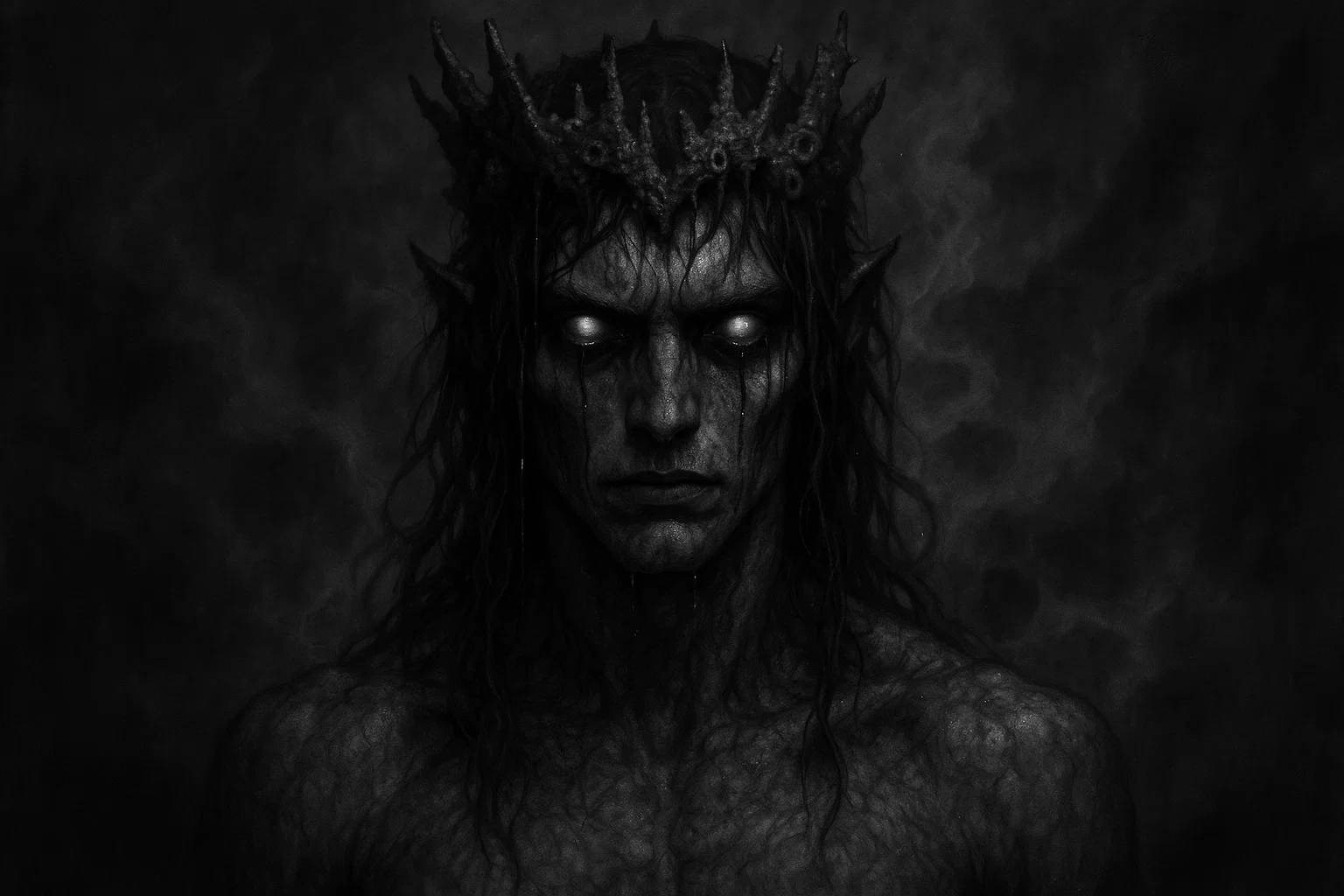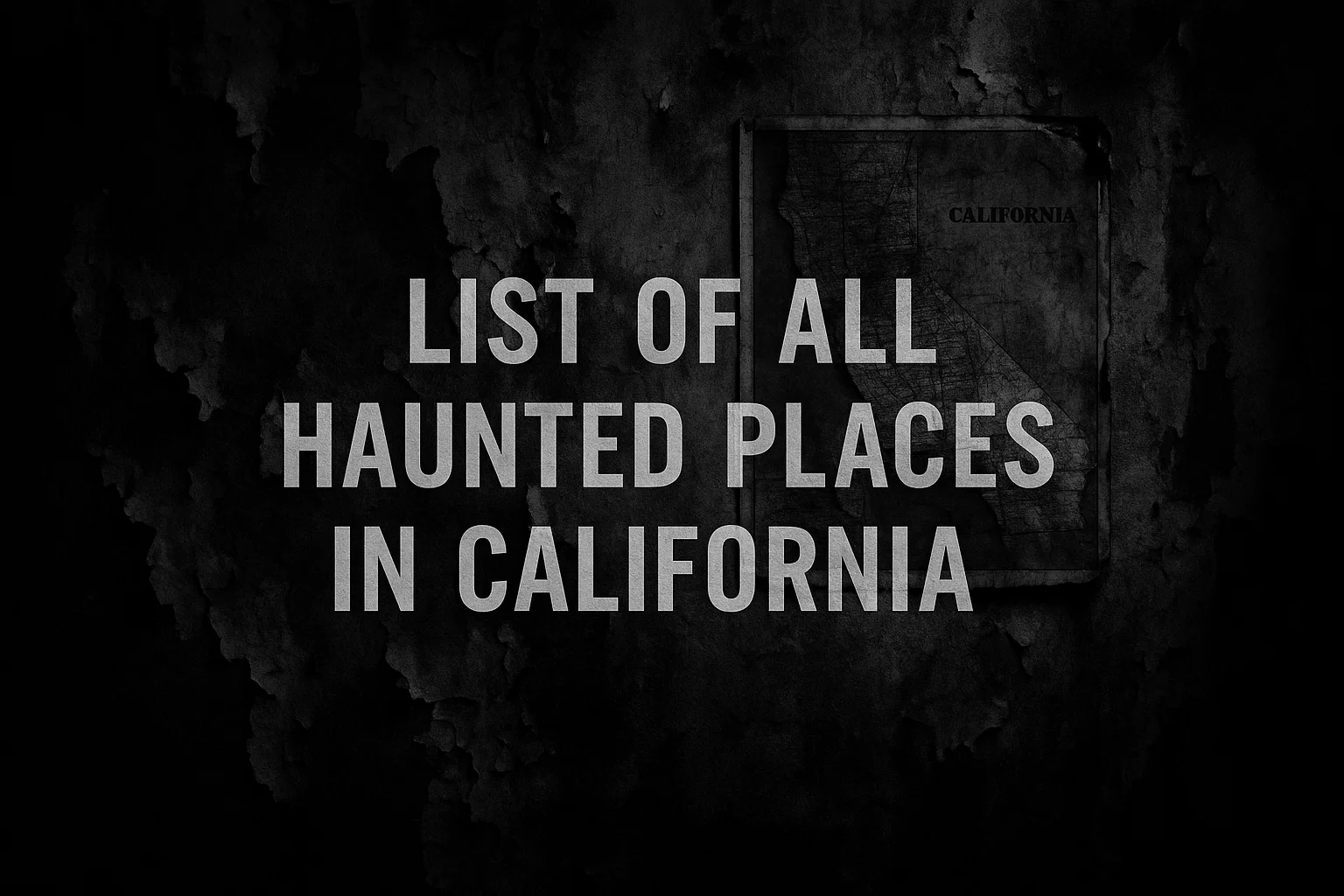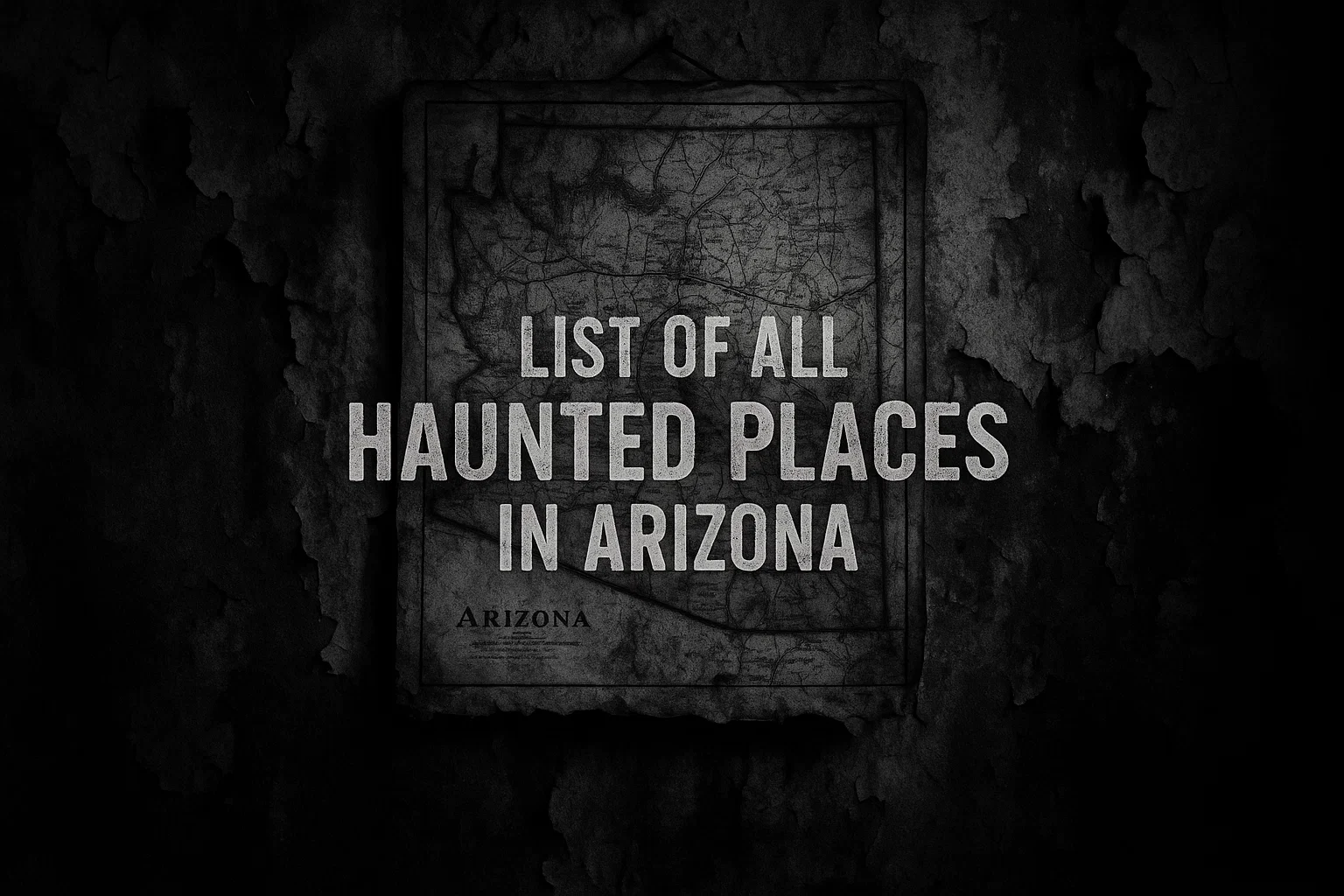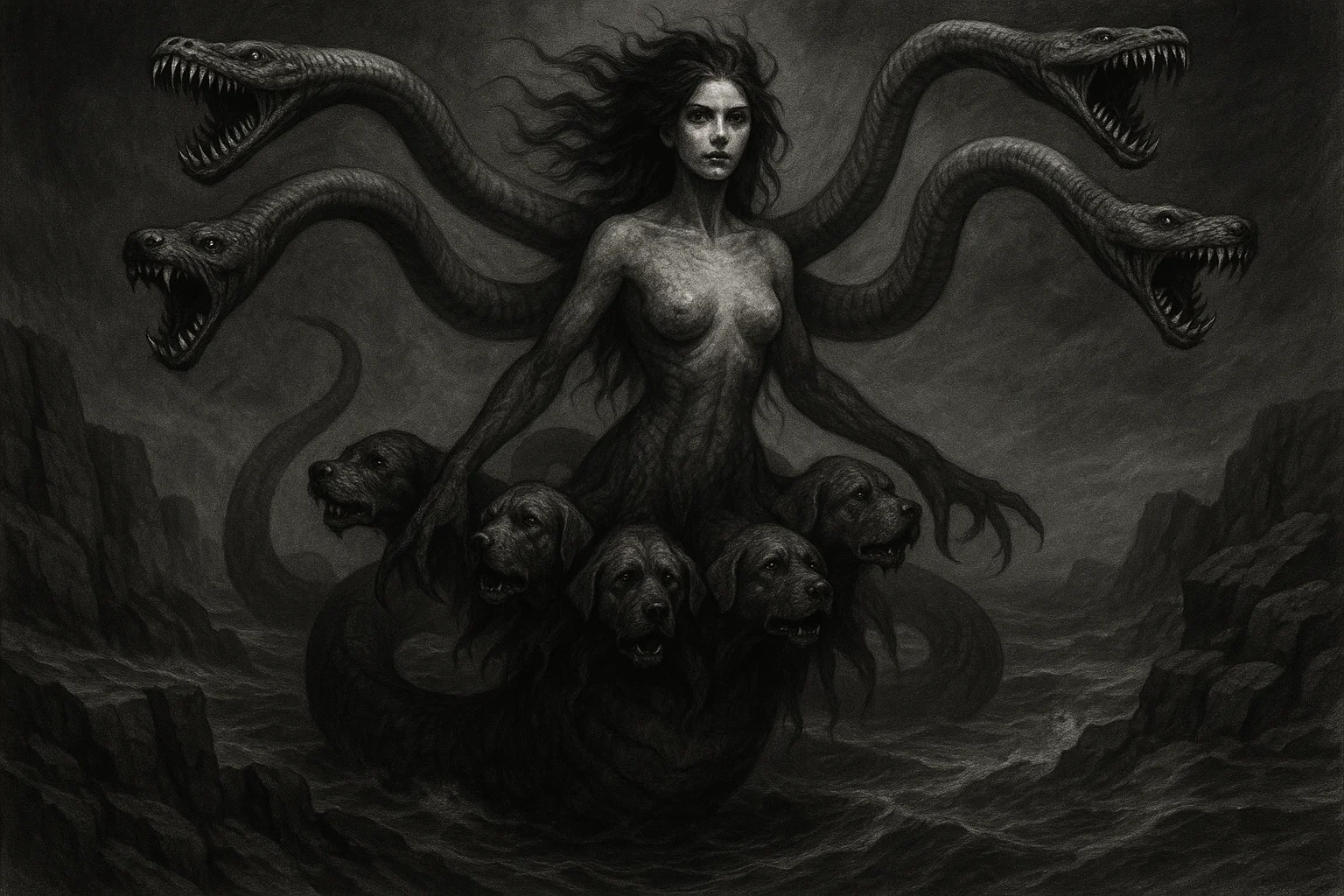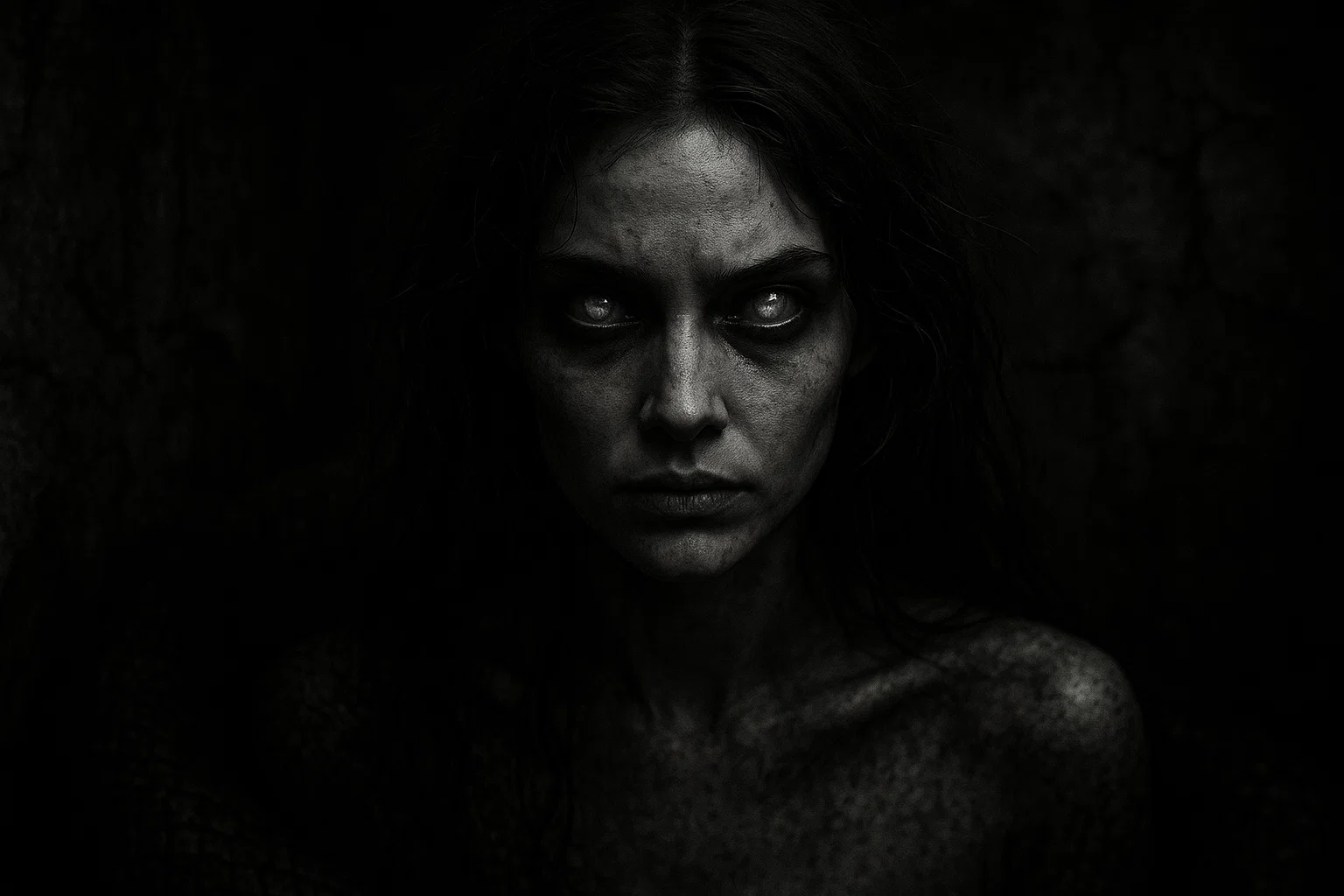In the turbulent undercurrents of ancient mythologies, where the ocean’s wrath mirrors the soul’s darkest temptations, Rahab slithers forth as a colossal demon of unrelenting chaos, a serpentine horror that defies divine order with its blustering arrogance.
This biblical sea monster, often cloaked in the guise of primordial fury, has haunted sacred texts and forbidden grimoires, embodying the abyssal void that seeks to swallow creation whole. What ancient secrets does Rahab guard in its watery lair, and how has this demonic entity corrupted empires and souls alike through waves of insolence?
Imagine a force so malevolent it stirs tempests to drown the faithful, whispers prideful delusions to shatter alliances, and coils around the roots of civilizations to drag them into oblivion—could such a demon truly exist, woven into the fabric of human history?
Summary
Key Information
| Category | Details |
|---|---|
| Name | Rahab, Rahab Seriel, Ramuel, Voviana, Grimarigor, Rahavael, Tanin, Lotan (in some comparative mythologies) |
| Title | Demonic Angel of the Sea, Ruler of the Abyss, Prince of Oceanic Chaos, Angel of Insolence and Arrogance, Guardian of Primordial Tumult, Emblem of Egyptian Hubris |
| Gender | Hermaphroditic (manifests with fluid traits, blending masculine ferocity and feminine deception in various lore) |
| Role | Harbinger of chaos and corruption; tempter through pride and defiance; instigator of floods and maritime disasters; overseer of drowned souls and abyssal horrors |
| Hierarchy | Crowned Prince of Hell; Elemental Prince of Water; Commands legions in the infernal navy; Subordinate to overarching lords like Lucifer or Samael |
| Servitors | Lesser water demons, sea serpents, drowned imps, chaotic elementals, spectral sirens; legions numbering in the thousands, drawn from sunken realms |
| Superior Demon | Lucifer (supreme overlord of prideful rebels); Azrael (pre-fall superior in angelic orders); Samael (ally in venomous temptations); Belial (overseer of lawless anarchy) |
| Powers | Dominion over storms and floods; shapeshifting into deceptive forms; amplification of human arrogance to cause downfall; command of oceanic beasts; psychic echoes from the deep to erode sanity |
| Appearance | Colossal multi-headed water serpent with swirling liquid scales; humanoid form as a lean, teal-haired youth with vermillion eyes; crowned with jagged coral, exuding briny foulness |
| Etymology | Rooted in Hebrew rahab signifying “blusterer,” “arrogance,” “storm,” or “tumult”; parallels in Semitic languages evoking raging waters and defiant rage |
| Associated Figures | Leviathan (chaotic sibling entity), Tiamat (Babylonian precursor), Lotan (Ugaritic counterpart), Pharaoh (symbolic embodiment of earthly pride), Yam (Canaanite sea god adversary) |
| Weaknesses | Divine smiting through faith; symbols of humility like scarlet cords; exposure to purifying light or salt rituals; invocations of opposing celestial forces |
| Opposing Angel/Saint | Archangel Michael (slayer of chaos); Gabriel (master of revelations against deception); St. Peter (guardian against heretical tempests); Raphael (healer of corrupted waters) |
| Equipment/Tools | Trident forged from abyssal currents; lash of coiling serpent tails; tome of echoed drowned voices; crown adorned with drowned treasures and coral thorns |
| Pantheon | Abrahamic demonology (Jewish and Christian roots); Mesopotamian influences (Tiamat parallels); Canaanite/Ugaritic connections (Yam and Lotan); Egyptian symbolic ties (as chaos emblem) |
Etymology
The name Rahab originates from the ancient Hebrew root r-h-b (ר-ה-ב), a linguistic construct that encapsulates notions of blustering violence, stormy agitation, and unbridled arrogance, much like the relentless crashing of ocean waves against unyielding shores.
In Biblical contexts, this term evolves to represent not just physical tumult but a metaphysical defiance, where Rahab as a demon personifies the chaotic resistance to cosmic order.
Scholars delving into Semitic philology note that rahab appears in poetic passages as a descriptor for overwhelming forces, drawing parallels to the Akkadian ra’abu, which denotes trembling rage or overflowing floods, underscoring the sea monster‘s association with uncontrollable elemental fury.
Expanding on this, the etymology reveals layers of cultural borrowing; in Ugaritic texts, similar roots describe sea deities like Lotan, a writhing serpent embodying marine chaos, suggesting Rahab‘s name absorbed traits from Canaanite mythology where “storm” and “arrogance” intertwine as divine attributes turned demonic.
Medieval Jewish interpreters, such as those in Talmudic commentaries, further dissected rahab to symbolize Egypt’s prideful stagnation—a “do-nothing” blusterer in Isaiah 30:7—transforming the name into a metaphor for futile opposition against divine will.
This dual nature, literal and figurative, positions Rahab as a linguistic emblem of corruption, where the roar of the sea becomes synonymous with the soul’s insolent rebellion.
Deeper analysis uncovers phonetic and symbolic ties to other ancient languages; for instance, in Aramaic derivatives, rahab evokes “breadth” or “vastness,” mirroring the expansive, engulfing abyss Rahab commands.
In comparative mythology, echoes resonate with Babylonian rababu, implying a quaking terror, aligning with Tiamat’s chaotic waters from which Rahab draws conceptual ancestry. Modern linguistic studies reinforce this, noting how rahab‘s onomatopoeic quality—mimicking the guttural crash of waves—serves to invoke fear, making the name a potent tool in ritualistic summoning.
Thus, the etymology of Rahab is a vortex of meanings: arrogance as a storm, tumult as temptation, and the demon‘s eternal challenge to harmony, a name that whispers corruption across millennia.
You May Also Like: Semyaza: The Fallen Angel Suspended Between Heaven and Earth
What Does the Demon Rahab Look Like?
Rahab‘s primary manifestation is that of a gargantuan sea serpent, its elongated body a swirling mass of translucent, liquid scales that shift like roiling currents, capable of engulfing ships in a single coil.
This form features multiple heads, each fanged maw exhaling briny mists laced with the stench of decayed depths, eyes glowing vermillion like submerged embers, and fins razor-sharp to rend flesh and hull alike. The demon‘s hide pulses with an otherworldly luminescence, veined with dark abyssal cracks that leak shadowy tendrils, symbolizing the chaos seeping into ordered realms.
In humanoid depictions from esoteric lore, Rahab appears as a strikingly lean and muscular figure, skin pallid green like kelp under storm light, with long teal hair cascading in perpetual wave-like disarray. Vermillion eyes, framed by lashes dripping eternal brine, pierce with arrogant scrutiny, while a hermaphroditic fluidity allows shifts between masculine bulk and feminine allure, often astride a spectral donkey amid whirlwinds.
A crown of jagged coral and barnacle-encrusted gold adorns its brow, and from its back emerge shadowy fins or vestigial wings, remnants of a fallen angelic state, exuding an aura of deceptive calm before unleashing tempests.
Distinct traits amplify Rahab‘s menace: a foul, saline odor that chokes the air, evoking drowned graves; claws hooked like rusted anchors for dragging victims below; and a voice thundering like distant breakers, laced with echoes of corrupted souls.
Whether as dragon or deceptive youth, Rahab warps perceptions, turning serene waters into maelstroms and instilling prideful illusions that lead to ruinous falls.
Historical and Mythological Background
From Primordial Abyss to Demonic Entity
The roots of Rahab trace back to the primordial chaos of ancient Near Eastern cosmologies, where this demon emerges as a embodiment of the untamed waters predating creation.
In early Semitic traditions, Rahab parallels the Babylonian goddess Tiamat, a salty sea dragoness representing the chaotic ocean from which the world was hewn through divine violence. Mesopotamian epics like the Enūma Eliš depict Marduk slaying Tiamat to form heavens and earth, a motif echoed in Rahab‘s biblical defeats, suggesting cultural exchanges during the Babylonian exile that infused Hebrew lore with these monstrous archetypes.
Further connections span to Ugaritic mythology, where Lotan—a seven-headed serpent and servant of the sea god Yam—mirrors Rahab‘s serpentine form and chaotic role, slain by Baal to establish order.
This Canaanite influence likely seeped into Israelite narratives, transforming Yam’s adversarial essence into Rahab‘s defiant bluster. Worldwide parallels abound: in Egyptian myths, Apophis (Apep), the chaos serpent opposing Ra’s solar barge, shares Rahab‘s nightly assaults on cosmic harmony, while Norse Jörmungandr, the Midgard Serpent encircling the world, evokes similar encircling abyssal threats.
Even in Hindu lore, the demon Vritra, a drought-bringing dragon slain by Indra, reflects Rahab‘s storm-stirring arrogance, highlighting a global archetype of aquatic chaos entities corrupting through elemental disorder.
As a fallen angel in later Jewish apocrypha, Rahab‘s origins shift to celestial rebellion, once a guardian of depths under Azrael, corrupted by proximity to human sins.
This demonic evolution cements Rahab as a universal symbol of primordial evil, its origins a tapestry of cross-cultural horrors weaving arrogance into the fabric of existence.
You May Also Like: Mastema: The Angel of Hostility Who Tested the Faithful
Rahab’s Cosmic Battle and Defeat
At the universe’s inception, before light pierced the void, Rahab thrashed in the formless deep, a multi-headed water dragon challenging the Creator’s mandate with roars that birthed tempests.
Biblical echoes in Job 26:12 describe Yahweh’s power stilling the sea and shattering Rahab, a cataclysmic chaoskampf where divine understanding pierces the demon‘s scales, scattering its essence to form boundaries between land and abyss.
This battle, detailed in poetic fragments, involves Rahab summoning whirlpools to engulf nascent stars, only for God’s arm to cleave its heads, spilling chaotic brine that solidifies into continents—a victory ensuring order’s fragile triumph over tumult.
Expanded lore from midrashic sources elaborates: Rahab, bloated with arrogance, refused to separate upper and lower waters during creation, bellowing defiance that shook ethereal realms. Yahweh’s response, a thunderous smite, left the demon’s corpse so malodorous it was entombed beneath seas to spare the world its corrupting stench, as per Talmud Baba Bathra 74b.
This myth not only underscores Rahab‘s role as chaos incarnate but its lingering influence, where remnants stir rogue waves to tempt sailors with illusions of mastery, corrupting through prideful overreach. Parallels to Tiamat’s dismemberment amplify this, with Rahab‘s defeat symbolizing the perpetual struggle against demonic entropy.
The Guardian of Egypt
Rahab‘s malevolence extends to terrestrial realms as Egypt’s demonic patron, its arrogant essence infusing Pharaoh’s heart with unyielding defiance during the Exodus. Isaiah 51:9–10 invokes the demon‘s slaying: Yahweh’s arm hewing Rahab in pieces, piercing the dragon to part the Red Sea, drowning Egyptian forces in vengeful floods.
This legend portrays Rahab manifesting as crimson whirlpools, stirring Nile serpents to plague Israelites, only to be shattered when Moses’ staff strikes, exposing the sea monster‘s vulnerability to faith’s rod.
Detailed expansions reveal Rahab whispering insolence to Egyptian scribes, amplifying plagues as tests of hubris, where locusts and darkness echo its abyssal domain. In one variant, the demon allies with lesser fiends to swarm reeds, devouring hope, yet scatters before the Passover blood—a scarlet emblem warding its grasp.
As Egypt’s emblem, Rahab embodies national pride’s downfall, its Red Sea lair forever a graveyard of chariots, corrupting survivors with echoes of lost glory. Connections to Apophis intensify this, where nightly chaos assaults mirror Pharaoh’s nocturnal pursuits, cementing Rahab as a corrupter of empires through defiant temptations.
The Angelic Fall
Once among the celestial Thrones as Rahavael, Rahab guarded earth’s watery veins, recording mortal whispers in a tome of oceanic echoes, seldom ascending to heavenly choirs. Subordinate to Azrael, this vigilant angel grew resentful witnessing humanity’s tumults, its pride swelling like rising tides until rebellion erupted, shaking seas in insolent fury.
Apocryphal texts like Enochian fragments depict Rahab joining the Grigori, fallen watchers lusting for forbidden secrets, its form warping into a hermaphroditic dragon upon exile to the abyss.
This narrative expands with details: Rahab‘s fall triggered global deluges, corrupting antediluvian societies with promises of aquatic dominion, only to drown them in hubris. Midrashic tales describe its wings morphing to fins, halo to coral thorns, as it coils in Hell’s watery pits, commanding drowned legions.
Allies like Samael fueled this descent, sharing venomous arts, while adversaries such as Michael pursued with flaming swords. Rahab‘s transformation exemplifies demonic corruption, turning guardianship to temptation, its tome now a ledger of souls dragged into eternal brine.
You May Also Like: Pruflas: Prince of Chaos in Hell’s Hierarchy
Later Legends
In medieval folklore, Rahab haunts the Red Sea as a vortex of crimson horrors, luring Crusader ships with illusory treasures before unleashing maelstroms. Zoharic mysticism portrays the demon as pride’s architect, stirring waves to test the righteous, its multi-headed form surfacing to claim heretics.
One legend details Spanish mariners invoking Rahab amid gales, the demon appearing as a crowned seductress on a donkey, granting passage for oaths of secrecy—pacts that corrupt through concealed arrogance.
Expansions include alliances with Leviathan, siblings in chaos plotting infernal upheavals, their roars birthing nautical omens. In grim variants, Rahab aids inquisitors by drowning dissenters, its servitors feasting on unrepentant flesh.
These tales blend Kabbalistic elements with seafaring superstitions, positioning Rahab as a liminal terror: guardian of sunken relics, tempter of explorers, its presence in fog-shrouded horizons a perpetual lure to prideful doom. Worldwide echoes persist in Polynesian shark-demons or African river spirits, reinforcing Rahab‘s global legacy of aquatic corruption.
Historical Mentions
| Text/Grimoire | Year | Description | Excerpt |
|---|---|---|---|
| Hebrew Bible (Book of Job) | c. 600 BCE | Rahab as a arrogant sea monster crushed by divine might, embodying subdued chaos. | “By his power he stilled the sea; by his understanding he shattered Rahab.” (Job 26:12) |
| Hebrew Bible (Psalm 89) | c. 500 BCE | Symbolic dragon slain, scattering enemies with God’s arm of strength. | “Thou hast crushed Rahab like one of the slain; with thy strong arm thou hast scattered thine enemies.” (Psalm 89:10) |
| Hebrew Bible (Isaiah 51) | c. 500 BCE | Ancient triumph over the pierced dragon, tied to seas parted for redemption. | “Awake, awake, put on strength, O arm of the Lord; awake, as in the days of old, the generations of long ago. Was it not thou that didst cut Rahab in pieces, that didst pierce the dragon?” (Isaiah 51:9) |
| Hebrew Bible (Isaiah 30) | c. 500 BCE | Emblem of Egypt’s idle arrogance, a blusterer achieving nothing. | “For the Egyptians help in vain and to no purpose… Therefore I call her Rahab who sits still.” (Isaiah 30:7) |
| Talmud (Baba Bathra 74b) | c. 500 CE | Ruler of seas whose foul corpse requires submersion to contain its corrupting odor. | “The Holy One, blessed be He, cast him [Rahab] into the depths of the sea… for had the water not covered him, no creature could have endured his stench.” |
| Zohar (Book of Splendor) | c. 1280 CE | Angel of pride agitating waters to roar against the pious, fostering temptation. | “Rahab, the angel of pride, shakes the waters and causes the sea to roar against the righteous.” (Zohar II:23a, adapted) |
| Sefer Raziel HaMalakh | c. 13th CE | Chaotic entity linked to aquatic mysteries, tempting with hidden depths. | “Rahab the prince of the sea, who was slain and cast into the depths, yet his echoes tempt the unwise.” |
Rahab’s Powers and Abilities
Rahab commands a suite of malevolent powers centered on aquatic dominion and psychological corruption, distinguishing it from lesser demons through its unique blend of elemental fury and insidious temptation.
Unlike common infernal abilities like fire manipulation or possession, Rahab specializes in generating cataclysmic storms and floods, drawing from primordial chaos to overwhelm lands and souls alike, as depicted in biblical metaphors where its thrashings birth deluges.
This demon employs these forces not for blunt destruction but to amplify human arrogance, whispering delusions of invincibility to captains navigating treacherous seas, leading them to defy warnings and court disaster.
Expanding on specific traits, Rahab’s shapeshifting prowess allows transformations into deceptive whirlwinds, seductive figures on spectral mounts, or colossal water-dragons, enabling infiltration of mortal minds to sow discord.
In esoteric traditions, it commands echoed voices from drowned victims, replaying boasts to erode sanity and foster isolation— a corruption tactic that turns communal bonds into solitary hubris.
Newer depictions in pop culture, such as role-playing games where Rahab appears as a chaotic boss entity, introduce abilities like psychic tidal waves that induce mass delusions, or summoning abyssal tentacles to drag foes into illusory depths, reflecting modern interpretations of its corrupting influence in digital realms.
Further unique powers include manipulation of oceanic treasures, revealing cursed relics to tempt the greedy, and control over sea creatures like serpents or spectral sharks to execute its will. Rahab corrupts by mirroring victims’ pride, inflating egos until they summon their own downfall, as in legends where scholars seek forbidden lore only to drown in overwhelming revelations.
In contemporary media echoes, such as fantasy novels portraying Rahab-like entities, powers evolve to include environmental corruption, tainting waters with arrogance-infused toxins that spread societal decay. Through these abilities, Rahab embodies eternal temptation, its powers a siren call to the abyss where pride meets perpetual ruin.
| Power/Ability | Description | Source (e.g., Grimoire) | How It Tempts/Corrupts Humans | Countermeasure (e.g., Opposing Angel or Ritual) |
|---|---|---|---|---|
| Storm Generation | Conjures violent tempests, rogue waves, and inundating floods from chaotic depths. | Talmud (Baba Bathra 74b) | Lures navigators with false confidence in mastery, resulting in catastrophic wrecks and lost fleets. | Michael’s invocation; ritual of anchored faith to calm inner storms. |
| Shapeshifting | Morphs into whirlwinds, alluring humanoids, or multi-headed dragons for deception. | Pseudomonarchia Daemonum | Poses as guides or lovers to the proud, forging pacts that isolate and betray. | Gabriel’s illuminating rite; amulet of true sight to pierce illusions. |
| Echoed Drowned Voices | Summons spectral replays of victims’ arrogant words to assault minds. | Zohar (II:23a) | Amplifies self-importance, fracturing alliances and driving paranoia-fueled falls. | St. Peter’s silence prayer; meditative void to mute corrupting echoes. |
| Pride Amplification | Inflates egos with whispers of superiority, provoking defiance against superiors. | Isaiah 51:9 | Corrupts rulers like Pharaoh, leading to empire-crushing hubris and isolation. | Humility confession ritual; Yahweh’s oath to subdue inner bluster. |
| Aquatic Beast Command | Directs sea monsters and drowned entities to attack or ensnare. | Jewish Folklore Compilations | Tempts explorers with visions of tamed beasts, only to unleash betrayal. | Raphael’s binding circle; salt-infused wards against marine minions. |
| Cursed Treasure Revelation | Unveils hidden oceanic riches laced with corrupting curses. | Midrashic Legends | Draws the avaricious into greed’s grip, drowning wealth in moral decay. | Scarlet cord talisman; purification fast to reject illusory gains. |
| Psychic Tidal Waves | Induces mass delusions via overwhelming mental floods (modern pop culture addition). | Fantasy Media Depictions | Overwhelms communities with collective arrogance, sparking chaotic uprisings. | Group faith invocation; lunar waning ritual to ebb psychic surges. |
You May Also Like: Beast of Bray Road: Wisconsin Creepiest Cryptid?
How to Counter Rahab’s Powers
To thwart Rahab‘s insidious abilities, one must embrace humility as the antithesis to its arrogant temptations, invoking rituals that reinforce divine order over chaotic depths.
Biblical precedents, like Yahweh’s smiting in Psalm 89, highlight faith’s power to pierce the demon‘s form; reciting such verses during storms creates ethereal barriers, stilling inner tumults amplified by echoed voices.
Salt circles, symbolizing purity’s dominion over brine, disrupt aquatic manifestations, while scarlet cords—echoing Joshua’s protective emblem—ward shapeshifting deceptions, binding the demon‘s fluidity.
For storm generation, opposing Archangel Michael’s warrior invocations summon celestial winds to disperse tempests, coupled with humility prayers that ground prideful impulses.
Against pride amplification, communal confessions foster vulnerability, starving Rahab‘s whispers, as St. Peter’s rites exorcise heretical isolations. Aquatic beast commands falter before Raphael’s healing bindings, using herb-infused waters to repel minions. In modern adaptations, waning moon meditations counter psychic tidal waves, ebbing delusions through phased reflections.
Extreme countermeasures involve Enochian calls to Azrael, reminding Rahab of pre-fall subjugation, or seven-day fasts mirroring its multi-headed defeat. These methods, blending scriptural authority with symbolic acts, affirm that Rahab‘s bluster yields to piety, transforming threats into testimonies of resilience.
Rahab’s Role in the Hierarchy of Hell
Within Hell’s stratified domains, Rahab reigns as a crowned prince overseeing the infernal oceans, a watery expanse of churning pits where drowned souls writhe in eternal arrogance.
Grimoric classifications position it among elemental princes, akin to Meririm of air or Pyriel of fire, but Rahab‘s aquatic realm—vast submarine fortresses of coral and wreckage—serves as Hell’s naval stronghold, commanding tempests that assail celestial borders. Subordinate to Lucifer, the prideful emperor, Rahab executes aquatic incursions, its rank below arch-princes like Belial yet above dukes stirring minor discords.
Notable subordinates include legions of lesser water demons—sea imps, spectral krakens, and drowned harpies—numbering thousands, organized into abyssal fleets for corrupting maritime ventures. Superior demons encompass Samael, whose venomous arts enhance Rahab‘s temptations, and Azazel, sharing fallen watcher lore.
Allies like Leviathan, a chaotic sibling, collaborate in deluge plots, while Asmodeus lends lustful deceptions to humanoid forms. Adversaries abound: Behemoth, the land-bound glutton, clashes in territorial quakes versus floods; Abaddon, warlike destroyer, rivals for souls amid battles.
In esoteric hierarchies from the Grand Grimoire, Rahab governs Neptune’s distant chills as one of seven electors, vetoing pacts involving seas, its relationships a web of infernal politics where pride sparks eternal feuds. This role cements Rahab as Hell’s admiral of corruption, its tumults ensuring unrest ripples through demonic ranks.
Astrological Associations and Symbolism
Rahab‘s astrological ties root in its watery chaos, aligning with Neptune—the planet of illusions and depths—evoking deceptive tides that mirror the demon‘s temptations. Zodiacally, Pisces governs its fluid, hermaphroditic nature, amplifying intuitive corruptions during lunar highs, while Scorpio adds transformative venom to its prideful stings.
Elements center on Water for abyssal dominion, with secondary Fire igniting storm fury, symbolizing chaotic eruptions from calm facades.
Colors include deep teal for oceanic voids, vermillion for fiery gazes, and inky black for primordial shadows, used in rituals to invoke or repel. Metals like silver channel lunar fluidity, copper conducts tempestuous energies, and iron wards its influence through grounding.
Precious stones encompass aquamarine for calming deceptive waves, black tourmaline for abyss protection, and obsidian for mirroring corrupting echoes. Numbers such as 19 evoke magickal invocations, 7 for multi-headed forms, and 51 for biblical ties.
Symbolism extends to days: Tuesday for martial storms, Monday for tidal pulls. Planets beyond Neptune include Uranus for rebellious shocks, Saturn for binding chaos. These associations, drawn from esoteric traditions, frame Rahab as a cosmic tempter, its symbols tools for occult engagements with aquatic evil.
| Astrological Association | Details |
|---|---|
| Element | Water (chaotic depths and floods); Fire (storm ignition and rage); secondary Earth for submerged anchors |
| Number | 19 (invocatory power); 7 (multi-headed symbolism); 23 (temptation cycles); 51 (biblical verse echoes) |
| Day | Tuesday (martial tempests); Monday (lunar tidal manipulations); Friday (deceptive allure) |
| Metal | Silver (fluid illusions); Copper (conductive fury); Iron (grounding wards against chaos) |
| Precious Stone/Crystal | Aquamarine (deceptive calm); Black Tourmaline (abyss shielding); Obsidian (echo reflection); Pearl (drowned treasures) |
| Color | Deep Teal (oceanic voids); Vermillion (fiery eyes); Inky Black (primordial shadows); Crimson (bloodied seas) |
| Zodiac | Pisces (fluid chaos); Scorpio (venomous transformations); Cancer (tidal emotional corruptions) |
| Planet | Neptune (illusory depths); Uranus (rebellious shocks); Saturn (binding eternal tumults) |
You May Also Like: Photographs from Another World | Horror Story
Rahab’s Sigil
Rahab‘s sigil, a intricate glyph from ancient grimoires, features a trident impaling a coiling serpent within a vortex circle, symbolizing command over waves and chaotic ensnarement. Lines swirl like whirlpools, barbed with fin-like protrusions, activated via brine or blood for summoning oceanic furies or pride temptations.
In Qliphothic practices, inscribed on coral, it opens gateways to abyssal pacts, its form warping reality to echo the demon‘s hermaphroditic fluidity.
Associated symbols include the triskelion for endless cycles of corruption, or inverted anchors for dragging souls. Offerings of salted relics honor Rahab, fueling rituals of storm-weaving.
| Symbol/Item | Association/Meaning | Use in Rituals (e.g., Summoning or Protection) |
|---|---|---|
| Serpent (Animal) | Writhing chaos and insidious prideful temptations. | Skins for summoning altars; effigies for warding aquatic assaults. |
| Kelp (Plant) | Entangling depths symbolizing hubris’s inescapable grip. | Incense in evocations; braided for binding chaotic influences. |
| Myrrh Incense | Briny smoke evoking deceptive calm before storms. | Burned for temptation pacts; scattered in protective circles. |
| Coral Crown | Sovereignty over drowned realms and infernal arrogance. | Worn in invocations; powdered for vision-inducing elixirs. |
| Scarlet Cord | Blood-red ward against drowning corruptions. | Knotted talismans for humility rites; hung to repel echoes. |
| Aquamarine Crystal | Stone of illusory waters channeling fluid deceptions. | Sigil foci for safe summonings; held in storm-calming meditations. |
| Trident | Weapon of wave command and piercing defiance. | Forged tools for ritual strikes; symbols in adversarial bindings. |
| Black Pearl | Gem of abyssal secrets and cursed treasures. | Offerings for lore revelations; crushed in corruption-cleansing potions. |
Comparison with Other Demons
| Demon | Primary Domain & Powers | Temptation & Corruption Style | Key Similarities/Differences to Rahab |
|---|---|---|---|
| Leviathan | Oceanic envy; coiling floods, jealousy inducement | Stirs endless desires leading to self-destruction | Sibling chaos monster; shares sea dominion but focuses on envy vs. Rahab’s pride; both slain in creation myths but Leviathan emphasizes gluttonous depths. |
| Tiamat | Primordial saltwater chaos; monster spawning, cosmic disorder | Births horrors to overthrow order, corrupting through overwhelming multiplicity | Babylonian precursor; multi-headed like Rahab but maternal creator of evils; differs in being a goddess slain for world formation vs. Rahab’s angelic fall. |
| Lotan | Ugaritic sea serpent; writhing destruction, storm alliance | Allies with sea gods to challenge divine kings, tempting through rebellious alliances | Canaanite counterpart; seven-headed serpent similar to Rahab’s form; focuses on servant role to Yam vs. Rahab’s independent princely arrogance. |
| Behemoth | Terrestrial gluttony; earth-shaking indulgence, land dominion | Fuels overconsumption, leading to hoarding and isolation | Land-based chaos twin; contrasts Rahab’s watery floods with quakes; both biblical beasts but Behemoth corrupts via excess vs. Rahab’s insolence. |
| Apophis | Egyptian chaos serpent; nightly solar assaults, eclipse inducement | Opposes light daily, corrupting through eternal night and fear | Similar daily battles against order; differs in desert river focus vs. Rahab’s oceanic vastness; both embody defiance but Apophis ties to sun vs. seas. |
| Yam | Canaanite sea god; turbulent waters, divine rivalry | Challenges storm gods for supremacy, tempting rulers with marine power | Adversarial sea entity; god-like status vs. Rahab’s demonic fall; shares tumult but Yam seeks throne vs. Rahab’s chaotic subversion. |
| Vritra | Hindu drought dragon; water withholding, storm blocking | Induces famine through arrogance, corrupting lands with dryness | Parallels in storm defiance; slain by Indra like Rahab by Yahweh; differs in causing drought vs. floods, focusing on withholding vs. overwhelming. |
| Jörmungandr | Norse world-encircling serpent; poison seas, apocalyptic release | Poisons oceans, tempting fate with end-times prophecies | Global encircler like Rahab’s abyssal coils; Ragnarok role vs. creation defeat; both marine horrors but Jörmungandr ties to Thor’s battles. |
| Apep | Variant of Apophis; underworld chaos, hypnotic deceptions | Hypnotizes to induce chaos, corrupting through mesmeric illusions | Identical to Apophis in essence; emphasizes hypnosis vs. Rahab’s echoed voices; both serpentine chaos but Apep underworld-bound. |
| Dagon | Philistine fish-god demon; maritime fertility turned corruption | Tempts with false abundance, leading to idolatrous falls | Aquatic deity-demon; shares sea association but focuses on false worship vs. Rahab’s pride; both corrupt coastal peoples. |
You May Also Like: What to Do If Your House Is Haunted: 11 Steps to Take Back Control
Conclusion
Rahab stands as an archetype of unrelenting demonic malice, its chaotic waves a perpetual assault on order, reminding humanity of pride’s perilous undertow.
Through expanded lore, from primordial origins to infernal hierarchies, this sea monster reveals layers of corruption that span cultures and epochs, a force that tempts and drowns without mercy. In confronting Rahab‘s legacy, we uncover the fragility of ego against eternal depths.
Yet hope pierces the abyss: countermeasures of faith and humility transform its roars into silenced echoes, guiding souls from temptation’s grasp. As modern depictions evolve, Rahab‘s essence endures, a cautionary tide against arrogance’s flood.
Ultimately, delving into Rahab illuminates inner battles, where demonic influences lurk in unchecked pride. By anchoring in divine truths, we navigate these waters, emerging resilient against the demon‘s bluster. May this comprehensive exploration fortify against such evils, charting paths to enlightened shores.

